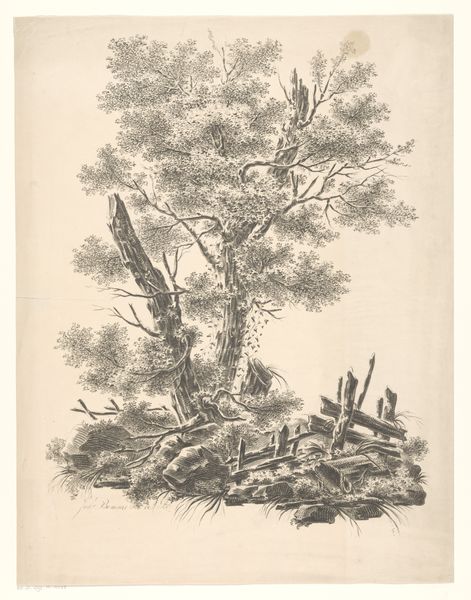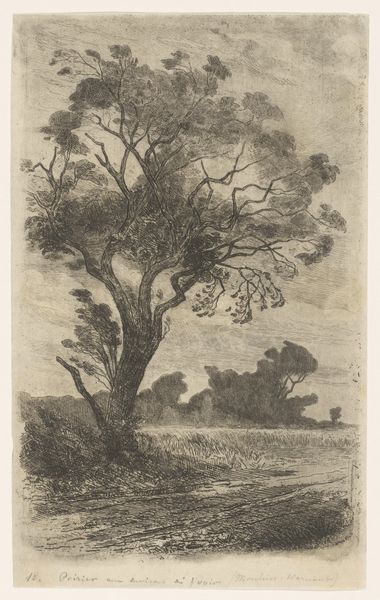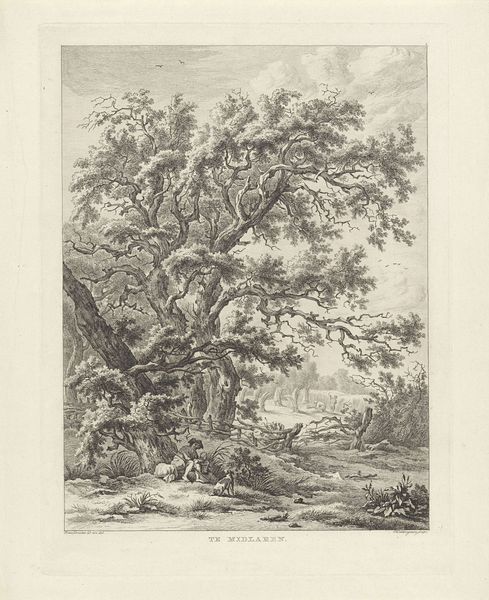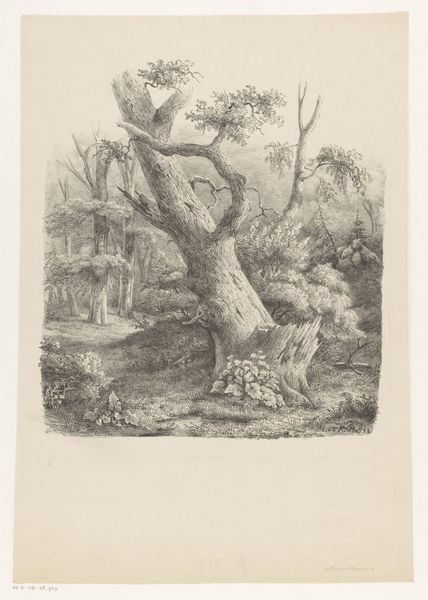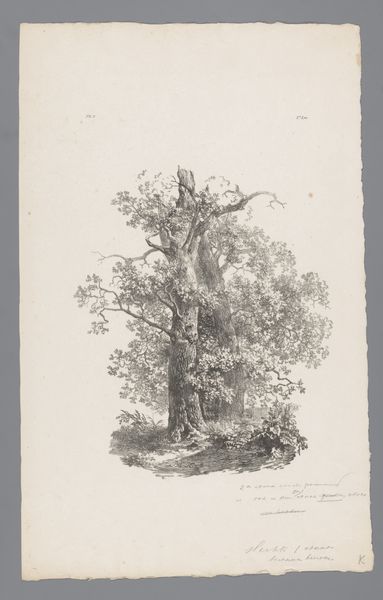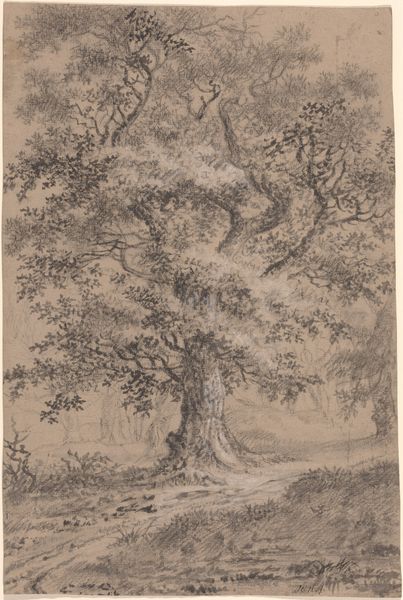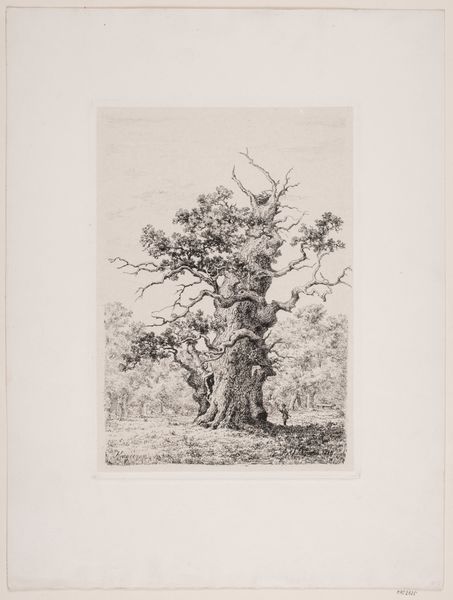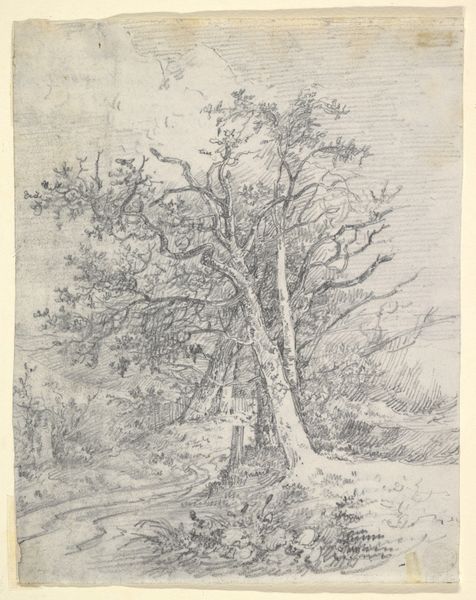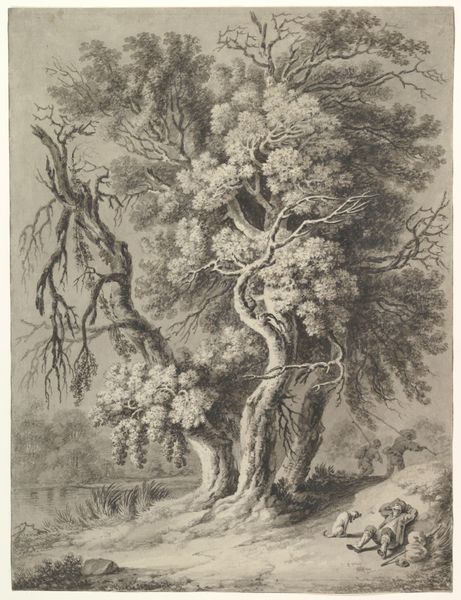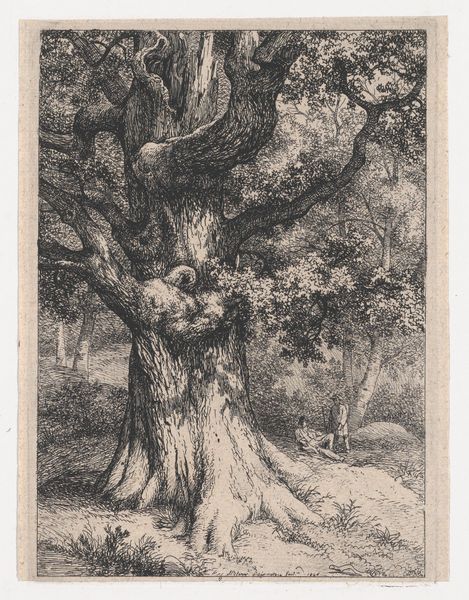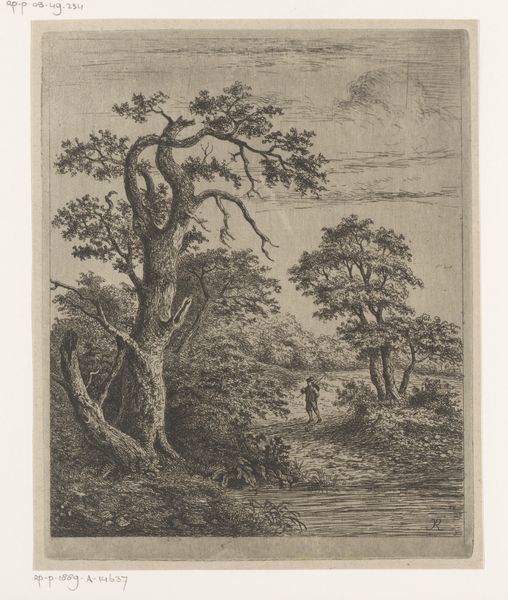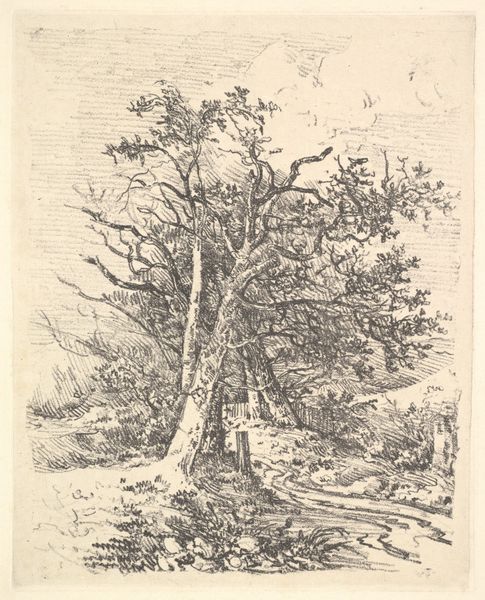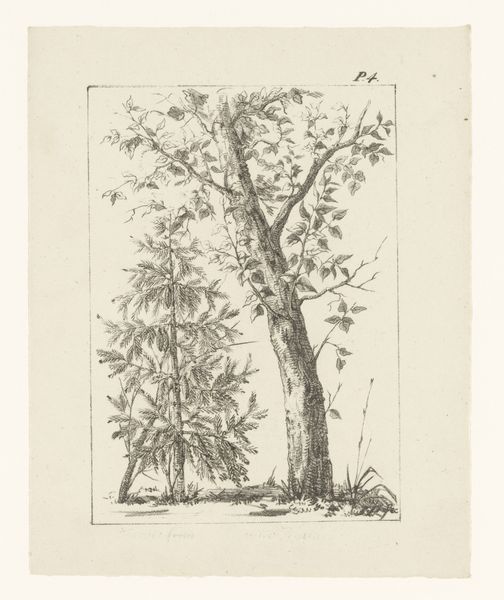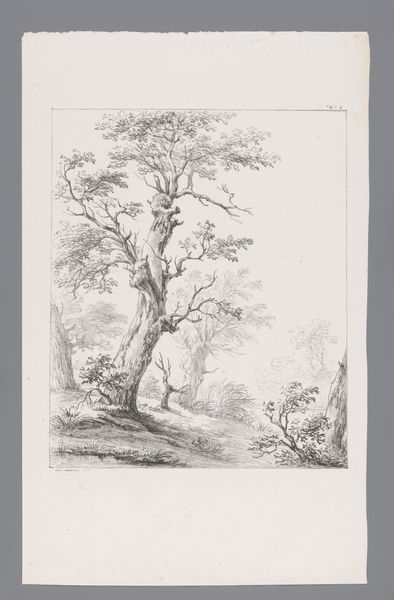
drawing, pencil
#
drawing
#
ink drawing
#
pen drawing
#
landscape
#
forest
#
romanticism
#
pencil
Dimensions: height 352 mm, width 244 mm
Copyright: Rijks Museum: Open Domain
Curator: Ah, this lovely drawing transports you into the forest primeval. François Joseph Pfeiffer completed "Vrouw in bos"—or "Woman in the Woods"— in 1817, rendered with both pen and pencil, evoking an air of quietude. What do you think? Editor: It has a solemn atmosphere. There's a figure—likely a woman—gathering wood at the foot of these immense, ancient trees. But their presence seems less benevolent and more... towering, almost threatening. I feel the imbalance of power in that relationship. Curator: Certainly, one senses the human figure’s insignificance against nature’s grandeur, but also its symbolic relationship to sustenance, both materially and spiritually, from the natural world. The Romantic artists saw landscape as a space of reflection. Consider, then, the trees' stark, almost gothic forms as representing states of mind, echoing ancient legends. Editor: But also perhaps reflective of land use? The stark quality, to me, resonates with issues of access, labor, and even ownership. Were women during this time relegated to these tasks? Is Pfeiffer commenting on class structure, even subtly, with this placement? This seemingly innocent scene might veil realities of gendered labor and social strata. Curator: That's fascinating! And reminds me that forests were frequently regarded in Romantic literature as liminal places, boundaries between safety and danger, home and the unknown. Think of fairytale woods and their capacity for darkness or revelation. In "Woman in the Woods," the gathering of firewood signifies both survival and vulnerability, no? Editor: Precisely. And for whom does she gather this wood? How is this simple, supposedly natural scene entangled within power relations? These trees carry cultural baggage, as does her posture of servitude amidst them. Is it nature's sublimity, or her submission to it? The lack of overt expression adds to its ambiguity, forcing viewers to fill in the story. Curator: The artist truly gives the trees life and dimension. These aren't generic trees. Their age, the texture of their bark – they hold the wisdom of centuries, wouldn't you say? Editor: Agreed, but such veneration for natural "wisdom" must also be interrogated. Who benefits when nature becomes the object of aesthetic contemplation divorced from ethical obligations towards the environment and other beings that inhabit it? It also suggests nature, devoid of other human interventions is a site to explore social anxieties. I wonder, finally, whose forest this is. Curator: Yes, so many complex layers within this serene image, thank you for prompting me to think of things I never had. Editor: Absolutely, and a reminder of the enduring need to address the human cost—often a gendered cost— in idyllic visions of the natural world.
Comments
No comments
Be the first to comment and join the conversation on the ultimate creative platform.
